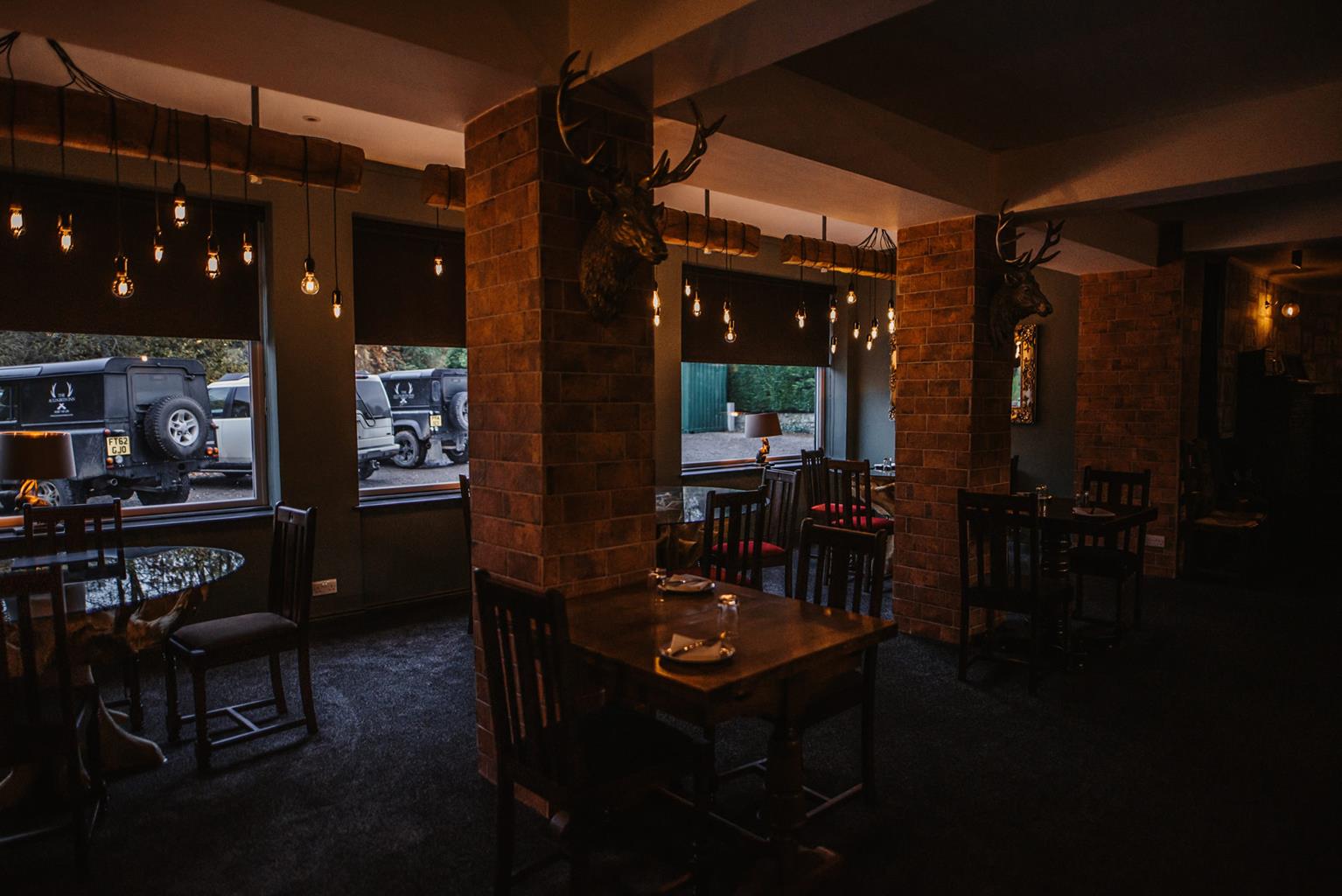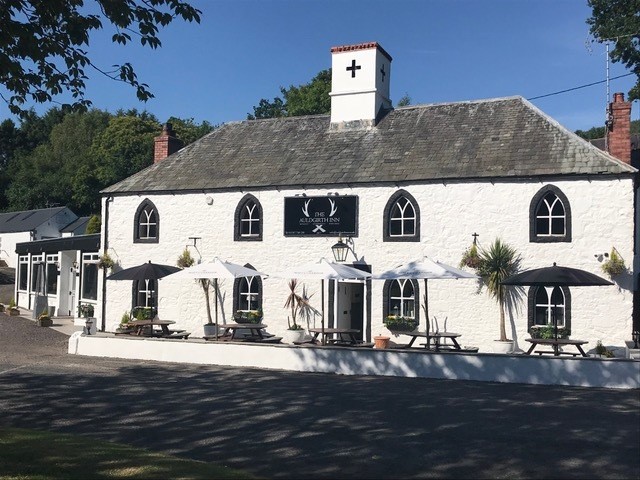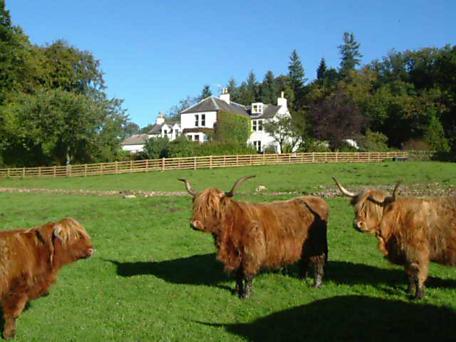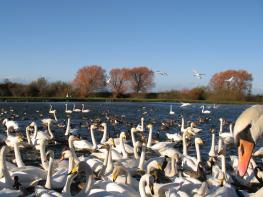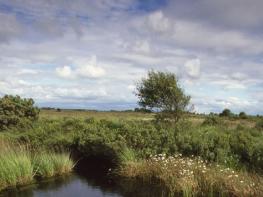Located off the A76 and a 10-minute drive north from Dumfries, The Auldgirth Inn is a Grade B…
Moniaive and the Glasgow Boys

The village that inspired the 19th-century school of artists known as the Glasgow Boys
5 miles (8kms)
About the walk
Moniaive is one of Scotland's most picturesque villages and described by The Times as 'one of the coolest villages in Britain'. Situated at a crossroads where the waters of three glens meet, it has a natural attraction for artists. James Paterson came here in the summer of 1879, the first of several summer painting visits. When he married in 1884, he decided to settle in Moniaive and moved into Kilneis on the outskirts of the village. Originally a small stone cottage, Paterson's father commissioned the architect John James Burnet to enlarge it as a wedding present for his son and his bride.
A rebellious bunch
Paterson was born in Glasgow in 1854 to a prosperous middle-class family of cotton and muslin manufacturers. He persuaded his father to make him a small allowance to enable him to study art in Paris. Courting controversy, he became part of the group of painters known as the Glasgow Boys, which included W Y Macgregor, E A Walton and James Guthrie, who would meet at life classes in Macgregor's Glasgow studio. They were a rebellious bunch and detested the moribund traditions of the Royal Scottish Academy (RSA). Influenced by the realism of contemporary French painters, they successfully exhibited in London and throughout Europe while being ignored by the Scottish establishment. In later life their painting became more conservative and Paterson was finally elected to the RSA and became its librarian and secretary.
James Paterson and Kelvingrove Museum
Much of Paterson's finest work was completed in Moniaive. A dedicated landscape painter, he had a wooden studio built on the banks of Craigdarroch Water. Today his watercolours and oils can be found in galleries throughout the world but his most famous work hangs in Glasgow's Kelvingrove Museum and Art Gallery. The Last Turning shows a woman in black walking along a country lane. To her left is the water of a mill pond and across it the spire of the clock tower on the schoolmaster's house. The pond is long gone from Moniaive, replaced by a century's growth of trees, but everything else remains the same and in winter it is still possible to glimpse the tower through the trees. From 1897 Paterson had a studio in Edinburgh and lived for only part of the year in Moniaive. By 1906 he had moved his family permanently to the capital and finally sold Kilneis in 1917. He died in Edinburgh in 1932 but his son, Hamish Constable Paterson, himself an artist, returned to live in Moniaive in 1953. Another Paterson artist, Ann Paterson Wallace, opened the James Paterson Museum in the village in the 1990s. Although this subsequently closed, her collection of Paterson memorabilia and Paterson's own photographs are still available for study at Glasgow University's Dumfries campus.
Walk directions
Exit the car park and turn right. At a nearby T-junction turn right and go over the pedestrian bridge, beside a garage, to enter Moniaive High Street at the George Hotel. Walk along the High Street, past the Market Cross, turn left and cross the road. Turn right when you reach the other side and head up Ayr Street, passing the public toilets.
The building on the right with the clock tower is the former schoolmaster's house. Continue up Ayr Street, passing a park on the right and some wooden garages on the left. Take the next right on to a narrow lane. Continue to the end and, at a T-junction, turn right.
Pass a modern bungalow on the left, then a field, then turn left on to a dirt road at the end of the field. Cross a bridge and continue up the road to Bardennoch. When the road curves right to enter the grounds of the house, go straight on, passing a waymarker post, and follow the road up the side of the wood and uphill.
At the end of the woodland section go through a gate and continue uphill, go through two more gates, and then at the top, near the ruin of Upper Bardennoch, go through another gate. From here continue to climb towards a stand of Scots pine. Head uphill through the trees, following markers, and continue toward another marker on the horizon at Bardennoch Hill.
From the summit, follow markers. Ahead is woodland and a gate in the wall. Head straight for this or follow the winding track. Go through the gate and keep straight ahead towards a lochan and the start of a forest road.
Turn right and follow this road downhill through several gates until it reaches a footpath fingerpost at a T-junction with a country lane. Go through a gate, turn right. At the next T-junction a left turn leads to the hamlet of Tynron, which is worth visiting. Otherwise, turn right again.
Follow this road past Dalmakerran farm then uphill and through a hazel wood. Pass two stone cottages on the right then, further along, another house. The road goes downhill again on to Dunreggan Brae. At the bottom of the hill re-enter Moniaive and turn right into the car park.
Additional information
Dirt roads, hill tracks, forest road and country lane
Hills and woodland
Keep on lead near livestock
OS Explorers 321 Nithsdale & Dumfries
Moniaive village car park
Ayr Street, passed on walk
WALKING IN SAFETY
Read our tips to look after yourself and the environment when following this walk.
Find out more
Also in the area
About the area
Discover Dumfries & Galloway
Dumfries and Galloway is a wonderfully undiscovered corner of Scotland – a romantic land of wooded glens, high hills and exposed moorland, haunted by its colourful past and the ghosts of those who fell in fierce and bloody battles. Heading west from Gretna Green you soon reach Dumfries, straddling the River Nith, where you may see red-breasted mergansers in summer.
The market town has strong associations with one of Scotland’s most famous sons, Robert Burns, who farmed nearby and returned to Dumfries towards the end of his life. You’ll find Burns-related visitor attractions around town, plus a portfolio of other sights ranging from ruined castles and abbeys to quirky museums. You can see for miles from the Camera Obscura, which occupies the top floor of the 18th-century windmill.
To the north lies a vast and endless landscape; mile upon mile of open moorland and afforested slopes stretching towards the Ayrshire coast. On the long haul to Stanraer, you’ll want to make regular stops and visit places like Gatehouse of Fleet, a delightful 18th-century planned town, and Creetown, a planned village on the estuary on the River Cree. Perfect for walking and fishing, Dumfries and Galloway seems gloriously untouched by 20th-century progress.
Nearby stays
Restaurants and Pubs
Nearby experiences
Recommended things to do
Why choose Rated Trips?
Your trusted guide to rated places across the UK
The best coverage
Discover more than 15,000 professionally rated places to stay, eat and visit from across the UK and Ireland.
Quality assured
Choose a place to stay safe in the knowledge that it has been expertly assessed by trained assessors.
Plan your next trip
Search by location or the type of place you're visiting to find your next ideal holiday experience.
Travel inspiration
Read our articles, city guides and recommended things to do for inspiration. We're here to help you explore the UK.

